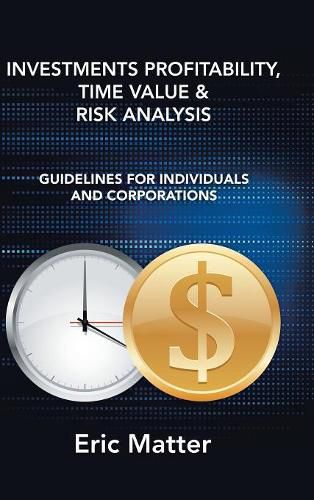Readings Newsletter
Become a Readings Member to make your shopping experience even easier.
Sign in or sign up for free!
You’re not far away from qualifying for FREE standard shipping within Australia
You’ve qualified for FREE standard shipping within Australia
The cart is loading…






This title is printed to order. This book may have been self-published. If so, we cannot guarantee the quality of the content. In the main most books will have gone through the editing process however some may not. We therefore suggest that you be aware of this before ordering this book. If in doubt check either the author or publisher’s details as we are unable to accept any returns unless they are faulty. Please contact us if you have any questions.
How does time impact the selection of investment options? What is the sensitivity of our selection to discount rate, inflation, loan rate, and tax rate? What is the risk of selecting a wrong option? Individuals and corporations are permanently facing critical choices in selecting the best options to optimize their own limited resources or sorting out how to maximize the profitability of their investments. Economic and financial environments will participate in the decision through such parameters like financial markets outlook, funding availability, interest rates, inflation, and taxes policies; but a more subjective perception of time will keep a key role in the global appreciation. The discounted cash flow methodology developed in this guide can be applied to any kind of investment by corporations or individuals, and its universal criteria will allow the selection of any investment or spending with and without financing. It outlines the central role of time in the appreciation of value and how it can affect the outcome of such analysis. This guide provides elements on the risks and uncertain future in profitability analysis and investment selection and introduces specific methodologies used for public investment selection. A dedicated registered companion website and its embedded web link allows an instant connection to a suite of spreadsheets, detailing the simulation of study cases through a financial model involving the key parameters. The reader may use it to perform his own simulations or to improve its accuracy by including other parameters.
$9.00 standard shipping within Australia
FREE standard shipping within Australia for orders over $100.00
Express & International shipping calculated at checkout
This title is printed to order. This book may have been self-published. If so, we cannot guarantee the quality of the content. In the main most books will have gone through the editing process however some may not. We therefore suggest that you be aware of this before ordering this book. If in doubt check either the author or publisher’s details as we are unable to accept any returns unless they are faulty. Please contact us if you have any questions.
How does time impact the selection of investment options? What is the sensitivity of our selection to discount rate, inflation, loan rate, and tax rate? What is the risk of selecting a wrong option? Individuals and corporations are permanently facing critical choices in selecting the best options to optimize their own limited resources or sorting out how to maximize the profitability of their investments. Economic and financial environments will participate in the decision through such parameters like financial markets outlook, funding availability, interest rates, inflation, and taxes policies; but a more subjective perception of time will keep a key role in the global appreciation. The discounted cash flow methodology developed in this guide can be applied to any kind of investment by corporations or individuals, and its universal criteria will allow the selection of any investment or spending with and without financing. It outlines the central role of time in the appreciation of value and how it can affect the outcome of such analysis. This guide provides elements on the risks and uncertain future in profitability analysis and investment selection and introduces specific methodologies used for public investment selection. A dedicated registered companion website and its embedded web link allows an instant connection to a suite of spreadsheets, detailing the simulation of study cases through a financial model involving the key parameters. The reader may use it to perform his own simulations or to improve its accuracy by including other parameters.